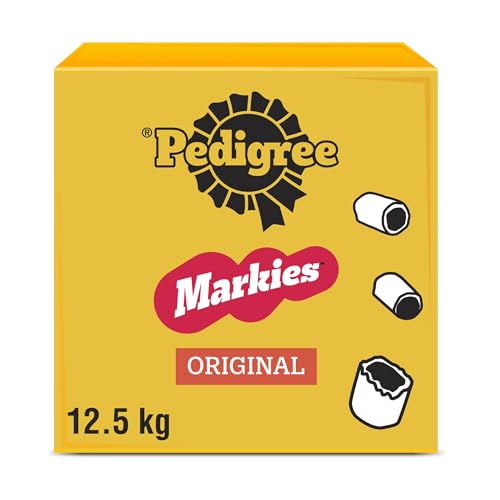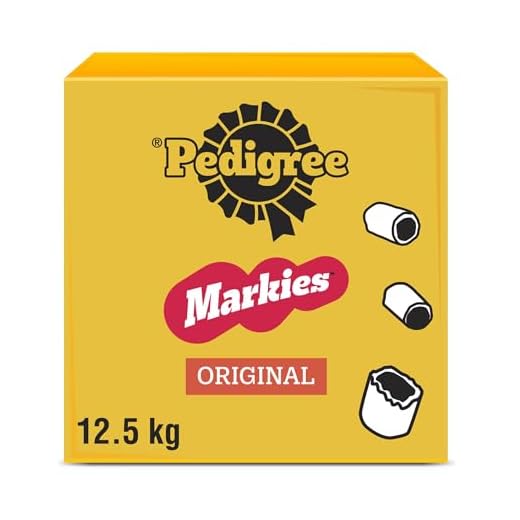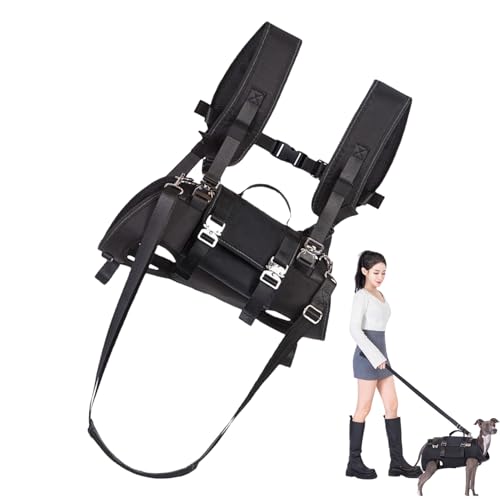




Raw marrow bones stand out as an excellent choice for maintaining your pup’s oral hygiene. These not only satisfy their natural urge to chew but also promote healthy gums and help reduce plaque buildup. When selecting marrow bones, opt for larger sizes to prevent any risk of splintering, which can pose a choking hazard.
Another great option is knuckle bones, rich in cartilage and nutrients. These provide a satisfying texture for your furry friend while contributing to dental cleaning. The chewing action helps scrub away food particles and supports overall dental health. Just ensure that they’re sourced from reputable suppliers to guarantee quality.
Chicken necks and wings present a softer alternative, making them suitable for smaller breeds or older pets with sensitive teeth. These chews can be an enjoyable treat while still offering some degree of dental benefit. Always supervise chewing sessions to ensure safety, particularly with softer options.
Incorporating these choices into your dog’s routine not only keeps their mouth clean but also enriches their overall eating experience. Observing how my own dog enjoys these chews has been a rewarding part of our daily bonding time, turning each snack into a playful and healthy ritual.
Choosing the Right Chew for Dental Health
Rawhide alternatives, like antlers or yak chews, can significantly benefit oral hygiene. Antlers are particularly long-lasting and help remove plaque, while yak chews are both digestible and promote healthy gums. I often find that these options not only keep my pup entertained but also contribute to better dental care.
Another excellent choice is dental chews specifically designed for oral health. These products often contain ingredients that help reduce tartar build-up and freshen breath. I’ve observed that my dog enjoys them, and they seem to make a noticeable difference after regular use.
When selecting chew options, consider the size and chewing habits of your pet. Larger breeds may require sturdier items, like beef bones, while smaller dogs might benefit from softer, more manageable alternatives. I once made the mistake of giving my little dog a large bone, and it was both difficult for him to handle and potentially dangerous.
Always supervise chewing sessions. I’ve learned the hard way that some chews can splinter or pose choking hazards. Keeping an eye on my dog while he enjoys his treats ensures safety and allows me to intervene if needed.
For those interested in the business side of pet care, you might find it worthwhile to check out how much do dog training business owners make. Understanding the financial aspects can help in making informed decisions about the types of products you choose for your furry friend.
Benefits of Raw Bones for Dental Health
Raw meaty treats can significantly contribute to maintaining your pet’s oral hygiene. Chewing on these items helps naturally scrape away plaque and tartar, promoting cleaner gums and fresher breath. The action of gnawing mimics a toothbrush, providing a mechanical cleaning effect that is hard to replicate with commercial dental products.
These natural chews also stimulate saliva production, which plays a crucial role in neutralising acids in the mouth. A well-balanced pH level is essential for preventing dental diseases. Saliva washes away food particles and bacteria, further enhancing the oral environment.
Incorporating raw options into your canine’s diet can also improve overall health, as they provide essential nutrients. Calcium and phosphorus are abundant in raw selections, supporting not only strong jaws but also overall bone health. This nutritional boost can lead to a more active and energetic companion.
Choosing the right sizes is vital. Larger pieces can engage your pet for longer periods, ensuring they get ample chewing benefits. Always supervise during chew time to prevent any choking hazards or excessive consumption.
Regular chewing sessions can lead to a more content and less anxious pet as well. Engaging in this natural behaviour can alleviate boredom and provide mental stimulation, contributing to a well-rounded lifestyle.
Types of Bones Safe for Chewing
Opt for raw, meaty options like chicken necks or wings. These provide a great balance of nutrition and are gentle on the enamel while promoting healthy chewing behaviour. They are easy for pups to handle and digest, making them a popular choice.
Marrow-filled Varieties
Marrow-filled choices, such as beef femur, offer not only a tasty treat but also a source of beneficial nutrients. The marrow inside is rich in fats and vitamins, enhancing the overall health of the canine. Just ensure to supervise during chewing sessions, as these can splinter if overly chewed.
Fish Alternatives
Consider fish options like salmon or sardine skins. These are softer and can be an excellent choice for smaller breeds or seniors. They provide omega-3 fatty acids, which contribute to a shiny coat while also being gentle on the jaws.
How to Choose the Right Size of Bone
Select a chew item that matches your canine’s jaw strength and size. For small breeds like Chihuahuas or Pomeranians, look for pieces that can comfortably fit in their mouths without the risk of choking. A smaller diameter helps prevent any hazards associated with larger items.
Medium-sized dogs, such as Beagles or Cocker Spaniels, benefit from items that are slightly larger, allowing them to chew effectively without overwhelming their jaws. Aim for a size that they can grasp easily, ensuring they can engage with it without excessive effort.
For larger breeds, like Labradors or German Shepherds, opt for substantial chews that can withstand their powerful bites. The thickness should be sufficient to resist breakage, providing a satisfying challenge that keeps them occupied while promoting dental health.
Pay attention to your pet’s chewing style. If your furry friend is an aggressive chewer, choose sturdier options that won’t splinter easily. Conversely, if they are more laid-back, you can introduce softer items that still provide the necessary benefits without the risk of damage.
Monitor your companion while they enjoy their chew. If they seem to struggle or become frustrated, it might be a sign that the size is inappropriate. Regularly assess their preferences and adjust accordingly, ensuring a safe and enjoyable experience every time.
Risks Associated with Cooked Bones
Cooked items pose significant dangers for canine companions. The primary concern is the splintering that occurs during chewing. These sharp fragments can cause severe injuries to the mouth, throat, or digestive tract. I once witnessed my friend’s Labrador struggle after swallowing a piece of a cooked chicken leg; the vet had to perform surgery to remove it. This traumatic experience is a reminder of how seemingly harmless treats can turn hazardous.
Another risk involves intestinal blockages. If a pet consumes larger sections, they may become lodged in the digestive system, leading to painful conditions requiring immediate veterinary attention. I remember my own pup getting quite ill after munching on a leftover rib; it turned out that a chunk had obstructed his intestines, and we spent a nerve-wracking night at the clinic.
Additionally, cooked items often lose their nutritional value during the preparation process. Although they may seem appealing, they offer little benefit compared to raw alternatives. It’s best to stick to options that maintain their natural integrity, ensuring safety and health. I’ve found that providing raw selections not only keeps my dog entertained but also supports his overall well-being.
Lastly, the risk of bacterial contamination increases with cooked items. Improper handling or storage can lead to foodborne illnesses. I learned this the hard way during a picnic when I mistakenly brought leftovers that had been left out too long. My dog didn’t eat any, but I was reminded of the importance of safe food practices to protect our furry friends.
Tips for Supervised Chewing Sessions
Always monitor your pet during chewing times. This prevents any mishaps and ensures a safe experience. Here’s how I keep it enjoyable and secure:
- Set a Time Limit: I usually limit sessions to 15-20 minutes. This prevents overindulgence and keeps the activity fresh.
- Choose a Calm Environment: I make sure the space is free from distractions. A quiet area helps maintain focus and reduces excitement levels.
- Observe Body Language: Pay attention to how your canine reacts. Signs of discomfort or aggression towards the chew item should prompt immediate intervention.
- Rotate Chewing Items: I rotate different chews to maintain interest. This also prevents wear on their favourite item and keeps sessions engaging.
- Use Engaging Commands: Incorporate commands like “leave it” or “drop it” to reinforce good behaviour during these sessions.
- Reward Calm Behaviour: I always praise my furry friend for relaxed chewing. This reinforces positive behaviour and encourages a calm approach.
Sharing these moments strengthens our bond. After a good chewing session, I often notice my pup is more relaxed and content. It’s a win-win for both of us!
FAQ:
What types of bones are safe for my dog’s teeth?
Safe bones for dogs’ teeth include raw bones such as beef or lamb shank bones, which are softer and less likely to splinter. It’s important to avoid cooked bones, as they can break and splinter, posing a choking hazard or causing internal injuries. Additionally, recreational bones, like knuckle bones, can help in cleaning your dog’s teeth while being enjoyable for them to chew on.
Are there specific bones that help with dental hygiene for dogs?
Yes, certain bones can aid in dental hygiene. Raw bones, particularly those with some meat still attached, can naturally help to scrape away plaque and tartar as your dog chews on them. Bones that are high in cartilage, like those from chicken necks or wings, can also be beneficial for dental health. Chewing on these bones stimulates saliva production, which further helps to clean teeth.
How often should I give my dog bones for dental care?
It’s generally advisable to give your dog bones for dental care a few times a week, rather than daily. This frequency allows your dog to benefit from the chewing without excessive wear on their teeth. Always supervise your dog while they are chewing bones and ensure that the bones are appropriate for their size and chewing habits to prevent any accidents.
Can I use synthetic bones for my dog’s dental care?
Synthetic bones can be a good alternative for dental care, particularly those designed specifically for dental hygiene. Many of these products are made to withstand chewing and can help reduce plaque and tartar buildup. However, it’s important to choose high-quality synthetic bones that are safe and suitable for your dog’s size. Always check for any small parts that could break off and pose a choking hazard.









